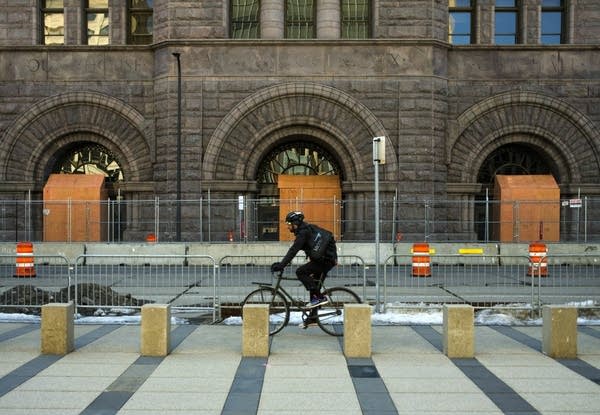Minnesota Guard troops standing down as Twin Cities are quiet after verdict

Boards stand in front of the windows and doors of Minneapolis City Hall as layers of barbed wire covered fencing are installed on the sidewalk outside on Feb. 25 in Minneapolis. Security measures put in place before the Chauvin trial soon will come down.
Stephen Maturen | Getty Images file
Go Deeper.
Create an account or log in to save stories.
Like this?
Thanks for liking this story! We have added it to a list of your favorite stories.


